Top Business Leaders in Asia Share Their Digitalization Tips
Author & Editor
Content Team Lead
Published on: Jan 13, 2021 Updated on: May 28, 2024
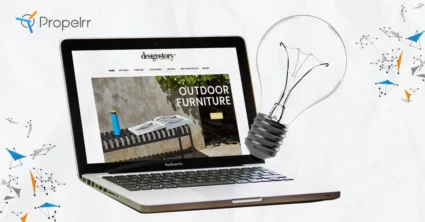
Table of Contents
The “new normal” is old news.
Businesses all over the world, big and small, have felt the impact of the coronavirus – countries have sealed their borders and quarantined, limits have been defined for human proximity, and the lifestyles we’re familiar with have suddenly been altered to mitigate the spread of the virus.
This unprecedented disruption has forced many organizations to look for innovative solutions to prevent financial losses and keep their business afloat. A dilemma that, in the age of the internet and hyper-informed consumers, digital platforms were the obvious solutions for.
But taking a closer look at the digital marketing scene in Southeast Asia, that answer didn’t seem to translate as easily as it should have.
Local businesses still behind in digital technology use.
In a study conducted by the World Bank and the National Economic Development Authority (NEDA), it was found that the Philippines is still lagging in terms of using digital technologies for businesses, the government, and citizens compared to our neighboring countries in Southeast Asia.
Although lagging, the adoption of digital technologies for business did spike during the pandemic. NEDA Undersecretary Rosemarie Edillon shares, “As we are now living with the new normal, the use of digital technology and digital transformation have become important for Filipinos in coping with the present crisis, moving towards economic recovery, and getting us back on track towards our long-term aspirations.”
Their study on Digitalizing the Philippine Economy also cited barriers to adoption and recommendations for officials from the private and public sectors to further bolster efforts for digital transformation.
Leading digital transformation – lessons from agile businesses.
But it’s not all bad news for businesses far and wide. While many still do fall behind, some businesses wasted no time in finding and adopting solutions.
In Southeast Asia, a region where digital transformation is faced with many barriers, what more can key players do to adapt? That’s what we’ll be discussing in this article.
Hoping to guide businesses who are finding themselves in a similar pinch in terms of digitalization, we as a digital marketing company in the Philippines took it upon ourselves to talk to some of the most agile and aggressive leaders working in various industries to get the insights that led them to succeed in adapting to the new normal.
Below, you’ll be able to read about their experiences and how the COVID-19 pandemic affected their businesses and industries, how they’re coping, and lessons they want to impart to all businesses in the same vertical or who are struggling to keep afloat during these trying times.
Financial Technology (Cambodia)
When we asked Manu Rajan, the Chief Executive Officer of Wing (Cambodia) about his thoughts on the impact of COVID-19 on his organization, the Fintech industry, and businesses in Cambodia, he shared struggles and fears that are, in these times, not uncommon.
Fortunately for Cambodia, the country didn’t undergo an extensive lockdown. Manu explains that in their side of the world, the impacts of COVID-19 were more concentrated on economic rather than health. He shared with us that, “the economy slowed down in March and April and some of the revenue lines started to decline.”
More important than revenues, the effects of the pandemic serve as a sobering reminder of the greater advocacy of Wing. Keeping in mind their goal to provide convenient and innovative solutions for the unbanked and underserved families in Cambodia among others, the Fintech executive asserted the urgency of the matter, “We realized by then that COVID-19 is real and [the impact of] what it can do to economies. So, we didn’t wait for the new normal to emerge and immediately went after alternate solutions.”
Challenges experienced and overcame
Of course with the disruption, you can’t help but ask about the challenges Wing faced during this health crisis. As the CEO, Manu cites key challenges he and the team encountered during the pandemic:
1. Fear and panic among employees and agents.
To keep the whole team safe, Wing resorted to creating awareness content about Precaution & Care. Other than that, Manu explains how they gave their team the freedom to choose what set up their employees preferred.

“We handed over control of their work-life to them – voluntary WFH (work-from-home) & mandatory 50% WFH daily. We saw high employee engagement because of this and that resulted in [the] completion of projects on time.”
A bold yet necessary move! Good thing this risk wasn’t gone to waste as their deliverables and timelines weren’t compromised. A true testament to when you put employees first, they return the value given to them.
2. A slowdown in business for clients.
Now, this is a challenge businesses in all sectors and verticals are experiencing during this health crisis. This can be tricky, and might even be a hit or miss for some, but Manu explains how they were able to overcome this setback by taking an unlikely detour.
To ensure continuous business for Wing, Manu shares that he and his team explored opportunities ‘that we left untapped before’. Detailing that, “We went aftermarket segments where our market share was still much lower and went after growing those aggressively.”
Instead of pushing to enter already big and saturated markets, focusing on smaller yet viable ones is one way to ensure continued growth amidst the situation.
3. Keeping costs down and brand visibility up
During this pandemic, it was a painfully obvious fact that many had to wiggle their pockets for every spare change they could get to stay afloat – Wing was not an exception.
As Manu shared, redirecting cash flow to ensure both cost-reduction and cost-efficiency required ‘unorthodox thinking in process re-engineering’. They immediately worked to identify and pause any ‘unnecessary promotions’ that were eating up funds and focused more on PR and Digital PR. According to Manu, this helped them remain as the top-of-mind brand for their audiences.
Digitalization during the pandemic and insights for continuity
As a Fintech company, Wing is operating with no lack of digital solutions. But even as an extensive portion of their operations have been digitized, Manu sought to expand and develop it further during the pandemic.
“We went after creating more digital platforms or eco-systems that were focused on job and income generation. Like eCommerce, mCommerce (mobile commerce), digital loyalty platforms that don’t subsidize your revenue,” Manu says, enumerating some of the technologies they’ve adopted.

Dictating the adoption of these digital technologies is a strategy that Manu says they put special focus on, which is to cut down on on-ground acquisition and concentrate efforts on the digital acquisition of customers. This, he says, has resulted in big reductions in costs spent on traditional acquisitions while meeting targets.
Asked about insights he would like to share with struggling financial institutions, Manu gave an answer expected of one who is both digital- and customer-focused:
Create digital ecosystems with non-digital last-mile fulfillment. Serve the customer at home.
Hygiene Retail
There’s no questioning that this pandemic pointed out the value of sanitation and proper hygiene. As global health experts repeatedly asserted its importance in preventing the spread of the virus, people were quick to empty grocery store shelves of hygiene paraphernalia.
The general assumption was that this was a good sign for businesses that distribute these. But as Lea, a Marketing Director for SCPA – a company locally distributing household hygiene and sanitary brands like Sanicare, Femme, Cheers, and Tisyu – many adjustments still had to be made so that they, more than saving a business, can care for their employees.
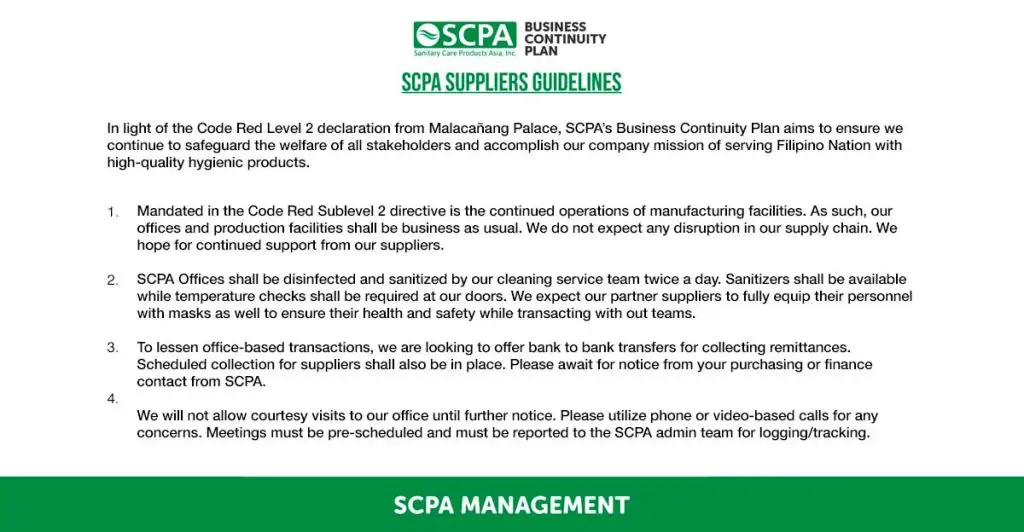
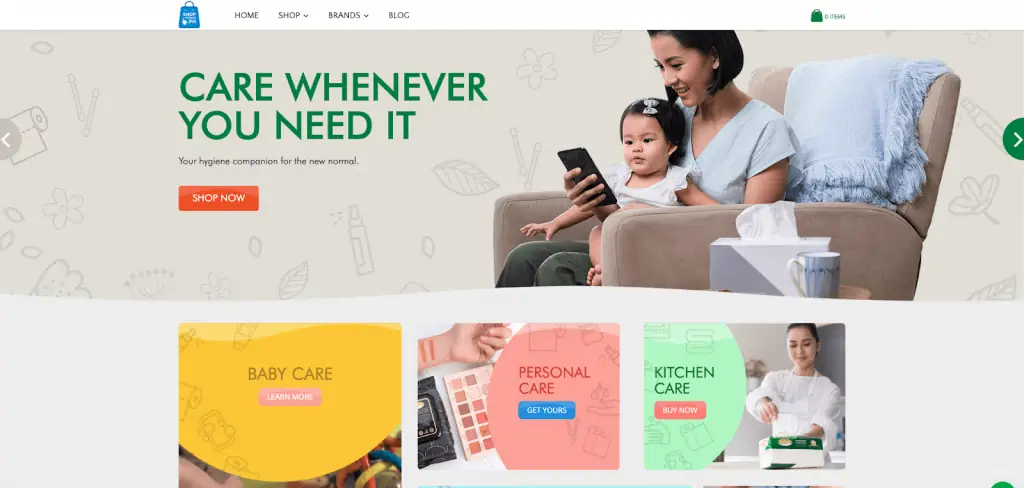
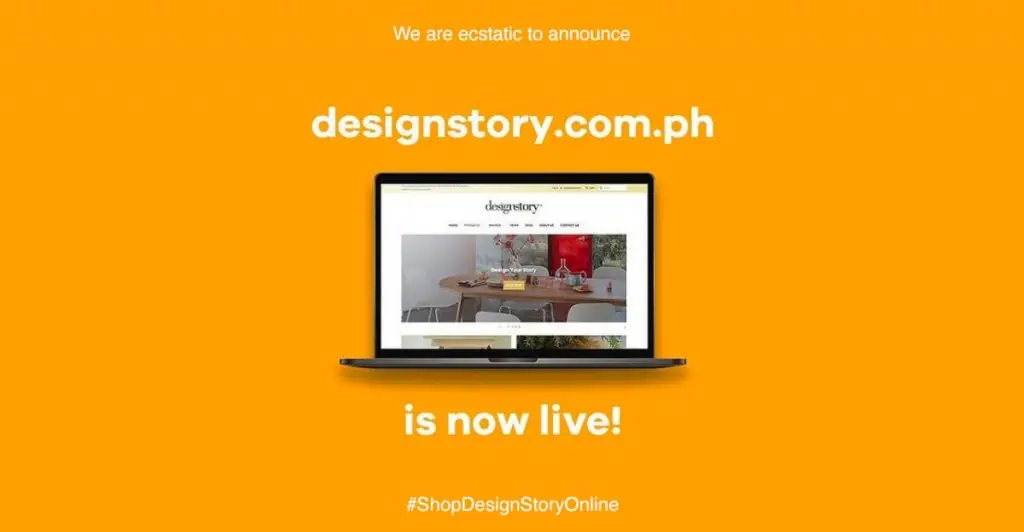

For SCPA, their priority is, and always has been, their people.
Sio-Pacis shared that her initial reaction to the pandemic and lockdown was “to make sure our people had clarity on our next steps.” Demonstrating a keen sense for the business landscape, the SCPA executive told us that they already anticipated the extensive lockdown and made it their priority to define policies.Announcement posted on Sanitary Care Products Asia Inc.’s Facebook Page.
“We defined quickly the policies as regards [to] work arrangements, health support, how to get things done; and that people understood these policies and were clear on these,” she detailed. Lea also explained that, having been tagged as an ‘essential business’ according to guidelines ‘brought on its own set of issues’.
Challenges experienced and overcame
SCPA was also quick to expect that the pandemic would just as be challenging for their people as it would be for the overall business. This required them to ‘focus inward’ and keep in close touch with their team members, ensuring that everyone received the appropriate physical and psychological support needed to get our work done.
People-focused as they are, even their major business-related concerns were influenced by people – specifically, their customers. According to Lea, key challenges specifically faced by their executives were first, “getting a feel of what our market wanted and needed in terms of brand communication, making sure we stayed relevant.”
Their second challenge was “the ability to have conversations with our key customers since they were also busy organizing themselves,” adds Lea.
Digitalization during the pandemic and insights for continuity
To continually bridge these gaps in communication, Lea shares that they’ve always depended on digital solutions – a lesson they learned the hard way a few years ago.
“Our first major investment in digitalization was back in 2013 after our main office burned down along with our local servers,” shares Lea. It’s no surprise that, from these hard lessons, SCPA presents a solid front against COVID-19.
How hardened and steadfast she must have looked while continuing her story, we can only imagine: “That experience taught us the importance of being on the cloud so the pandemic didn’t disrupt our backend as much as it might have.”
With Lea’s words, big investments seem to sound smaller as she shares openly and without flinching: “We’ve invested approximately 20-25M in our digitalization.” A sum of money that was dedicated to optimizations meant to serve all stakeholders in the best possible way.
Since 2018, SCPA has launched its online store and worked obstinately to expand its presence to platforms such as Lazada, Shopee, and Beauty MNL. Customers can also find that, beyond accessibility, digitalization was also done to provide more flexible and secure payment options for them. Through expanded payment avenues and added online check writing facilities (allows for digital check issuance), in-person transactions can be reduced.The screenshot is taken from Shop Hygiene, SCPA’s Ecommerce Website.
As Lea stressed early on: their people are their first priority. This initiated the migration of operations to online platforms through the investment in digital collaboration tools and cloud-based ERP. This, according to SCPA, has streamlined remote work – making it more conducive to adjustability and productivity for their team.
Lea wishes to leave retailers who are still challenged by these times a point that many who get too caught up in the idea of digitalization really need to hear in order to ground themselves:
“Digitalization is just a tool, but the focus is still people. Going digital is important as work habits and work expectations change, as where and how people buy change, but honestly, your company can go digital-only as fast as your slowest team members or your slowest customers can go digital – and only as fast as your internet provider!”
She emphasized that, although digital may be the new environment, ‘principles of good business remain the same’. She closes her tips and advice with these words:
Offer real value and do right by your customers, treat your people well, and value the partners who help your business grow. As businesses step into the post-coronavirus future, they need to find a balance between what worked before and what needs to happen to succeed in the next normal.
Home Design and Furniture
In the digital world, the importance of design has become more pronounced and urgent as users become more mindful of the quality of their experience. User experience, among other website development capabilities, has become a non-negotiable element to building a website due to these more particular audiences. But injecting digital into the design, especially in the case of designer furniture retailer Design Story, was a different matter.
To comply with lockdown protocols and safeguard the health of their team and clients, Design Story’s showroom was closed down completely for the first time since opening in 2014. But as a business that relies on meeting and attending to clients in-person, the work-from-home setup and having to sell and keep business running put them in a bind.
Communication, and a few other adjustments, became their lifeline. “It was the first time we had to close down our retail stores where most of our clients interact with us. Addressing the health and safety of our team came first, and when we had that settled, we made sure to keep our lines open as we adjust to this norm of working apart,” said Dana.
Challenges experienced and overcame
Design and technology have one crucial element in common: innovation. After weeks of grappling with the new normal for a retailer whose doors are closed, the Design Story team decided: it’s time to have a website. But with a team made up of people who mostly came from design backgrounds with zero website development experience, how well did that pan out?
With focus, agility, and innovativeness, they launched their website about a month after the lockdown.
“As a team, we focused on achieving our goals, and we were able to have our e-commerce site in approximately one month. We had to learn new ways of doing things, and there’s still a lot to navigate for the team in terms of digitalization, but one thing we banked on is constant and proper communication with everyone in the team,” shared Dana to Propelrr.Announcement post from Design Story’s Instagram page.
But the tale of Design Story’s digital transformation doesn’t just end at their website. Dana describes the changes they underwent to adapt as ‘a quick turn to 180 degrees’, as most of their processes and transactions were still offline. This entailed redirecting their resources and budgets to other digital-focused initiatives.
Dana details; “We had to shift some of our focus and allot a bulk of our resources on our online efforts. Marketing efforts, content creation, website development, e-commerce, logistics, down to the equipment and computers for the whole team – all had to accommodate the inevitability of digitalization.”
Digitalization during the pandemic and insights for continuity
The screenshot is taken from Design Story’s website.
With the new digital capabilities of the Design Story showroom came, of course, a redirected focus to online marketing. Specifically, they began picking up the pace with digital campaigns that “make way for engagement and we translate the message that we want to convey to our clients.”
These messages, they said, pertain to describing the products in detail with Dana adding that nuances, however little, make or break a sale. She said, “There’s always a level of uncertainty when you make an online purchase because of the missing face time you get with an item – with furniture especially, a lot of clients will prefer to see and to feel the product before making the purchase final.”
To meet their clients where they were at in terms of their needs and pain points with a new online shopping experience, Design Story once again put special emphasis on communication. This open feedback loop is so that their clients feel comfortable to share their stories with them.
“Customer service is of utmost importance to us, and we make sure we are there when our clients need our assistance,” said the Design Story managing director.
Digitally transforming that aspect of their business took them to have a more active presence on social media platforms such as Instagram – further bridging the gap that the pandemic has forced on them and their clients. As Dana puts it, “Instagram as a platform allows us to tune in to each client’s personality and style. By accommodating them as we usually do in-store, we hope to make them feel that the connection will always be present between us regardless of the physical absence.”
The lessons the Design Story team leaves with after their rapid digital transformation was one that resonates among many who’ve felt isolated in digital spaces. More so during this time when we are also physically distancing from one another. Posting for reasons beyond the “Likes” was the general approach they tackled digital marketing with.
“We do our best to practice efficiency – respond fast and communicate clearly with your audience. We absorb feedback, good and bad, and take them as learning experiences,” said Dana. Closing off our correspondence on business digitalization, Dana added a message that is equally grounded and hopeful for a brighter future in this digital landscape:
We believe we have a long way to go, but here are some tips that worked for us. Stay true to your core. Listen to your clients. Learn to adapt. Social media is a powerful tool, use it to convey your message.
Health and Fitness
Lockdowns and stringent policies prohibiting physical contact spelled danger for establishments like gyms and fitness studios. Posing as a terrible irony to loud calls for improving and preserving health and immunity, these very establishments that aided in that were among those who were dealt the hardest blows amid a pandemic.
But by being quick on their feet (or bikes) Ride Revolution was able to survive the worst and are doing well despite having to close their glass doors. Pulled by the leadership of CEO Noel Tordesillas and Head of Marketing and Business Development EG Bautista, the indoor cycling studio became the first in the country to provide live online cycling classes.
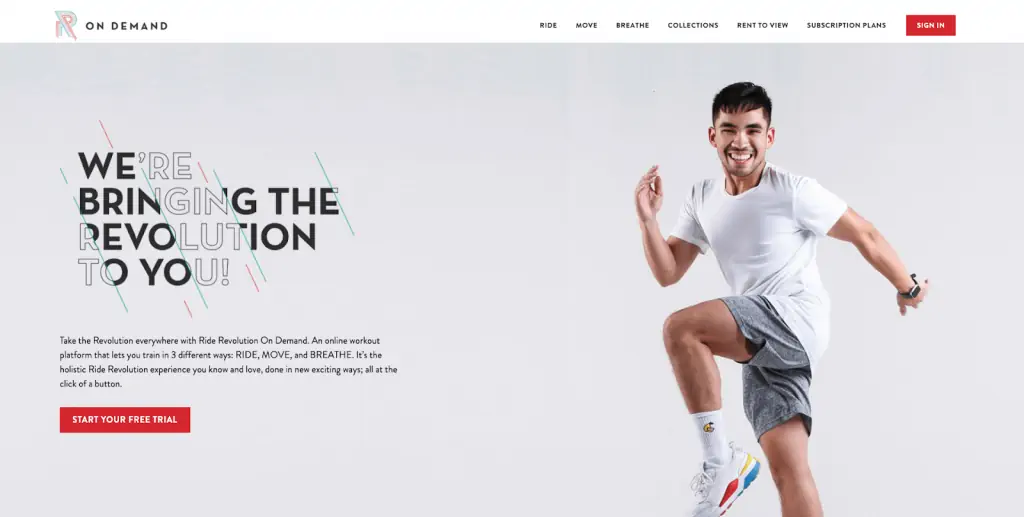
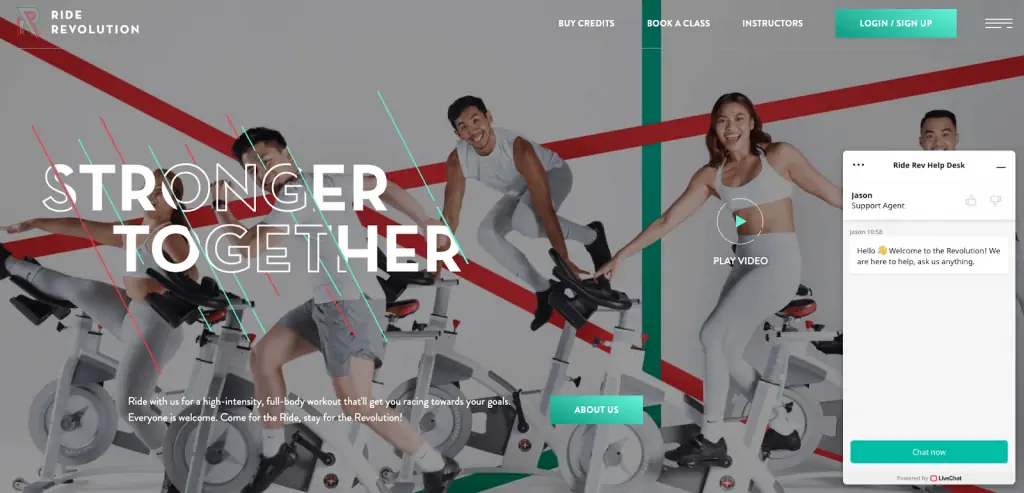
“Right away, we knew that we would need to find other ways to reach our customers, not just for the sake of business continuity, but to maintain the sense of community we’ve always fostered in these trying times,” shared Noel when we reached out to them for their insights.
Challenges experienced and overcame
Being something that’s never been done by other studios, the digitalization of live indoor cycling classes came both as a challenge and salvation for Ride Revolution. Paving the way, after all, meant that there is no one in front of you to follow or model after.
EG echoed as much when he detailed the process of ironing out the physical aspects of the rides; “Since we were the first in the market to rent our bikes, there was no blueprint for us to follow. We had to come up with everything from scratch, from the pricing to delivery and pick-up.”
But as with any challenge, in typical Ride Revolution fashion – gritted teeth and powering through 45-minute intense cardio – they’ve proven that they can overcome and emerge stronger.
‘Quick-fix solutions’ were not an option for a business ‘built on face-to-face experiences’ said Noel firmly. If the goal was to preserve a community and perfectly replicate an in-person experience online, then they needed to stretch their imaginations. Hence, big changes really had to be made in order to thrive.This screenshot was taken from the home page of Ride Revolution On-demand.
“So while the market was engaged in…IG Live workouts, we began to lay the foundation for long-term solutions such as our bike rental program and video-on-demand platform…. We needed to find new avenues to provide the type of experience we were known for – that meant going digital,” Noel said.
By this writing, all of the bikes are settled in the houses of their regulars; their shop is live and ready to sell to new riders; pre-recorded classes are readily accessible via On-Demand, and Zoom classes go by smoothly as if they were built for this kind of experience. This is not to say, however, that Ride Revolution was totally caught off-guard. Noel and EG revealed that the team always had plans to widen their reach through online means – a plan that was expedited by the catalytic pandemic.
“In a short span of time, we learned and unlearned; we worked double time to conceptualize and launch products and services that we can stand by and be proud of,” said Noel.
Digitalization during the pandemic and insights for continuity
As a fitness class provider, Ride Revolution seems to have written the book of how to do it online. But as a business, the service isn’t just limited to the 45-minute classes. To replace operations usually done in-person, EG and Noel expressed that they’ve invested in other digital solutions, with responding to customer concerns and information dissemination set as the highest priorities.
“People have a lot of questions – especially in the beginning – and it was a matter of who was best suited to properly communicate with them regarding these new products and services,” EG shared. They have since integrated a live chat feature into their website so that customers could reach them faster. Responses and conversations are monitored closely to guarantee quick and accurate responses.Screenshot of Ride Revolution’s home page featuring the live chat integration.
As mentioned earlier, these integrations come on top of investments in e-commerce to sell bikes online, hold live classes via Zoom, and subscription- and web-based pre-recorded classes.
As if reading the next question in our heads: would, after the pandemic blows over, they revert to their usual in-person only experiences, EG and Noel answer us with a firm, ‘no’. Citing 2020’s aggressive push on industries to go digital, Ride Revolution’s management recognizes how integrated technology is in our daily lives.
Those factors, according to Noel, have ‘allowed people to feel more comfortable with online experiences’ as he stressed the importance of creating products that are digital-oriented and digital forward.
“For us, it means that even when we go back to our in-studio experience, later on, we project that our customers will still choose to take both our live and online classes – it won’t just be one or the other. Instead of being mere bandaid solutions, our digital offerings must be permanent fixtures that are fully integrated to stand side by side with our live offerings,” said Noel.
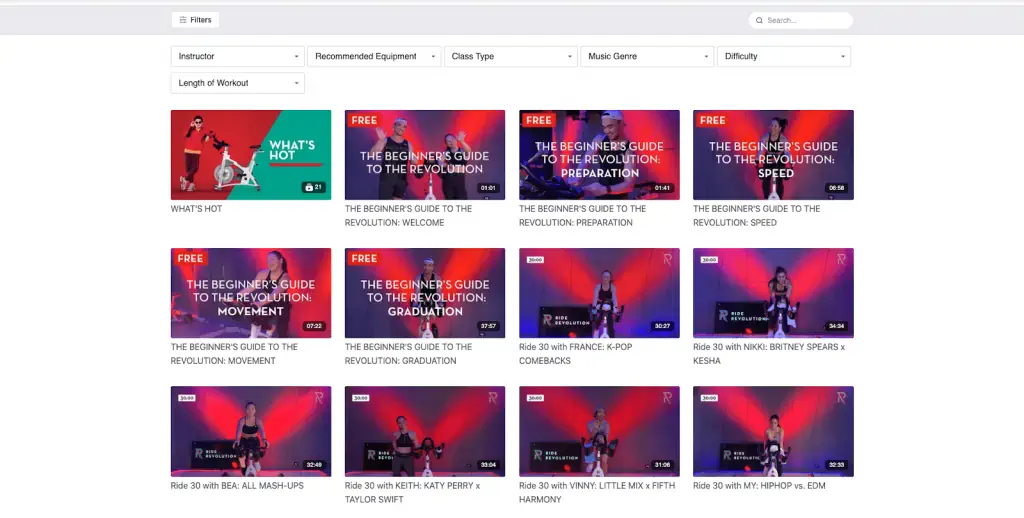
Looking to inspire more fitness establishments to forge on amid the challenges, EG advises studio operators that aren’t scaled to go digital yet to start small. They can do this by first creating products that closely resemble their pre-pandemic offerings, according to EG.
“Also, don’t worry about offering the perfect product or experience. Initially, your customers will be more forgiving because they will be happy that you’ve made your business available to them online,” he adds.
Once you go live online, EG emphasizes the importance of continually scaling and improving your services as fast as possible, and as feedback comes in. “Make adjustments as you see fit and respond to how customers are interacting with you,” he said.
Providing a customer-centric perspective to scaling web-based iterations of services, Noel took care to remind businesses to “pay as much attention to the offline experience as you do to the online experience” and “don’t put all your focus on building a beautiful website and neglect how your product is packaged and delivered.”
Since the dawn of the internet and its rapid progress, the art of listening seems to have become lost to us. But hearing their last piece of advice proves that despite the flood of content, important and meaningful messages come forth and appear as glaring signs that we can do better. As a final note of advice, Noel summed up their learnings from their rapid shift to digital:
“Listen to your customers. Think of other possible revenue streams that could complement your main business in ways that may have not been applicable before.
Don’t hesitate to try new things. Everything moves faster online so it’s easy to experiment by keeping what works and changing what doesn’t.
And don’t worry too much – 2020 is a reset button for many industries. Market leaders are back to square one just like everyone else. Businesses that view the ‘new normal’ as an opportunity rather than a struggle are the ones that will thrive.”
Key Takeaways
We can all agree that 2020 was, by far, not the most pleasant year for everyone. But as we go into 2021 with renewed optimism that we can do better, remember that:
- Innovation during these new times doesn’t always mean executing anything grand. Often, it’s enough to take small and untried steps and scaling along the way.
- Attentively listening to the feedback of customers, employees, and other stakeholders is a vital compass to make sure that you stay true to your goals and purpose.
- Making operations as safe and conducive for adjustment as possible has huge pay-offs from both internal and external stakeholders.
- Technology has become a necessity now more than it is a convenient development. To harness it as early as possible will be crucial to thriving not just in 2021, but beyond.
Did these insights inspire and reinvigorate you to tackle 2021? What new thing did you and your company do that helped you greatly in 2020? Let’s have a chat about it! Send us a message on Propelrr’s Facebook, X, or LinkedIn.
